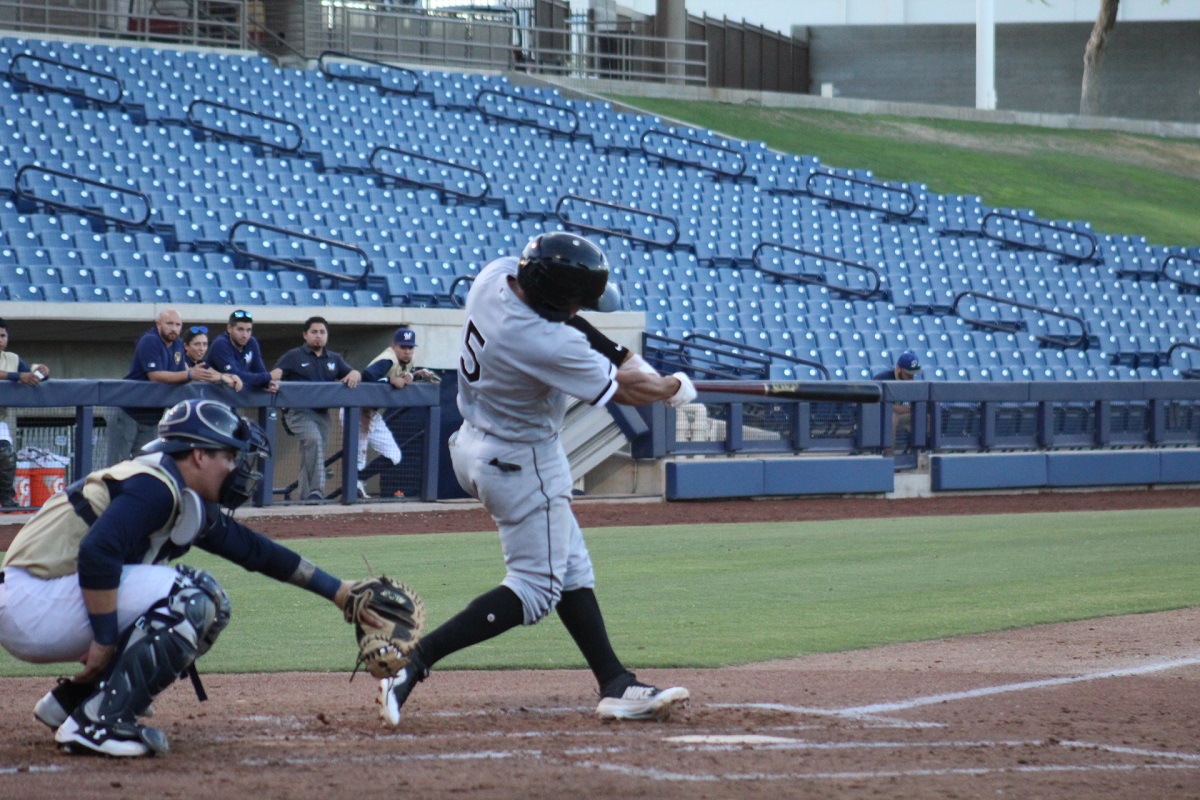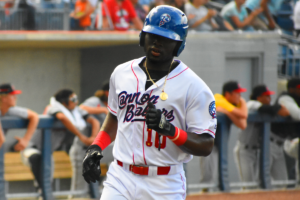Outside the spotlight: Marco Paddy adds to White Sox international infrastructure despite challenges

Marco Paddy is one of the best international scouts in the world. His official title with the Chicago White Sox is Special Assistant to the Senior Vice President/General Manager. Jim Thome shares the same title, but the functionality is much different.
Paddy runs the club’s international operation and has done so since joining the organization in December 2011. He has provided a calming presence to the franchise over the past decade after the White Sox were wrought with despair over the Dave Wilder scandal. Under the previous decision maker, ineffective players were often signed for too much money, and the organization’s reputation was severely damaged in the international marketplace.
In 2017, general manager Rick Hahn echoed that the White Sox’ “infrastructure and talent base was virtually non-existent” before the addition of Paddy. Functionality has been achieved, and the organization is once again a respected destination. The White Sox still don’t spend enough money on the international market, and they haven’t found a way to take full advantage of the rule changes in regards to signing players with a finite amount of resources. The franchise has been lauded for their success in the international space and credit is deserved in certain areas, but the maximization of resources isn’t one of them.
With the help of Marco Paddy, the White Sox scouted and signed Jose Abreu, Luis Robert and Fernando Tatis Jr. The pursuits of Abreu and Robert were well documented, and both were tremendous opportunities properly seized by the organization.
Paddy and his staff have signed hundreds of players since taking over the post, but the spending strategy is often questionable compared to other teams that frequently operate in the talent accumulation space. While 18- to 22-year-old Cubans are always likely to land in Chicago, the best players in most international classes aren’t even an option for the White Sox.
Micker Adolfo was awarded a $1.6 million bonus soon after the pursuit of Abreu, and it was considered to be a huge step in the right direction for the franchise. Adolfo is now 24 years old with his roster spot in jeopardy having never played above Double-A. The $1.6 million commitment to him is still the largest deal that Jerry Reinsdorf has given to a 16-year-old international prospect.
20% of the top 100 prospects list at MLB Pipeline is comprised of international players who were signed as teenagers. The White Sox don’t have access to the Wander Franco’s, Jasson Dominquez’s and Marco Luciano’s of the world because they just don’t play in the same arena, despite having a man fronting the department who is capable of such pursuits.
Paddy met a selected number of the local media this week via conference call and relayed that he was proud of their international endeavors during this unprecedented time. Paddy discussed his daily interactions with players and detailed exactly what he’s doing to keep tabs on international prospects who are slated to sign with the club when signing restrictions are officially lifted in January.
James Fegan of The Athletic detailed some of the activities of recent top signings. Yolbert Sanchez, Bryan Ramos and Benyamin Bailey all recently took part during Instructional League action in Arizona. Paddy touched on the growth of Elijah Tatis, as well.
Paddy believes Sanchez has the tools to become an everyday shortstop in the big leagues. The 23-year-old Cuban infielder signed for $2.5 million last year and is an adept defender. He should play in High-A in 2021.
Ramos is another Cuban that was signed during the 2019 period. The 18-year-old posted a 110 wRC+ in the AZL last year, and Paddy emphasized his polished bat and power potential. The third baseman should make his full season debut in 2021.
Tatis played in the Dominican Summer League and will likely report there again for 2021. He’s put on strength, and the veteran scout believes that he can definitely stay at shortstop and mentioned that he’s “going to surprise a lot of people.”
Bailey is a 19-year-old Panamanian who posted a 166 wRC+ in the DSL in 2019. The 6-foot-4, 215-pound outfielder reminds Paddy of Carlos Lee and is expected to make his stateside debut, too.
Three other former international signings from the 2016 class are eligible for December’s Rule 5 Draft, but are no real threat to be selected. Lenyn Sosa, Anderson Comas and Luis Mieses all missed our top 30 midseason update but were listed on the just missed portion.
Sosa is a 20-year-old Venezuelan shortstop who signed for $325,000. The infielder is ranked as the #25 prospect in the system, according to MLB Pipeline. Sosa holds his own while being young for every level, maintains a solid approach at the plate and should remain at shortstop long term.
Mieses is a 20-year-old left-handed hitting outfielder who signed for $428,000 out of the Dominican Republic. Comas joined Mieses for a similar bonus amount and also hits from the left side. Both players struggled in the Pioneer League in 2019 and neither was present for fall instructional league. However, due to the minor league restructuring across the sport, the outfielders will likely report to Low-A Kannapolis in 2021. Sosa probably goes to High-A Winston Salem.
20-year-old Cuban righty Norge Vera is expected to sign with the White Sox when the upcoming period officially begins in January. The club also has commitments from six other prospects, who FutureSox previously touched on and will detail more in the coming months.
Oscar Colas and Yoelqui Cespedes are available, and the Sox are in the mix for both players. White Sox decision makers won’t comment on these players until it’s permitted, but there is a horde of recent signings with potentially interesting futures who weren’t discussed on the recent media call.
The players listed below are important to keep in mind, but weren’t named in the aforementioned media session.
Ronaldo Guzman
Guzman recently took part in fall instructs and is slated to pitch stateside as an 18-year-old in 2021. He was signed out of the Dominican Republic in 2018. In the southpaw’s first season with the organization, Guzman posted a 4.53 ERA with a 3.19 FIP for the White Sox’s affiliate in the Dominican Summer League. He was very young but struck out 76 hitters in 51.2 innings.
The freshly turned 18-year-old shows a low 90s fastball with an easy arm action. The delivery is repeatable out of an athletic frame. Guzman’s calling card is as an advanced changeup that could be a plus pitch. He signed for $75,000. On an episode of the FutureSox podcast last year, Ben Badler of Baseball America spoke at length about Guzman and stated that he was a sleeper.
Cristian Mena
Outiside of a glowing review from Badler and some very limited video, there isn’t much available on this 17-year-old. Mena signed during the 2019 international period for $250,000 out of the Dominican Republic. The right-hander possesses starter traits with an athletic and projectable body.
At 6-foot-2, 175 pounds, Mena has an easy delivery and a feel for three pitches. His fastball sits in the low 90s and already shows a power breaking ball that records extremely high spin rates. Mena did not pitch in the DSL this past season due to the shutdown, and was relegated to Tricky League action and workouts. Mena will likely pitch in the DSL in 2021 but could debut stateside for instructional league next fall.
Manuel Veloz
Veloz is a right-handed pitcher who turns 20 in January but seems to be a true relief prospect at this stage. With that designation, it makes sense to push him to the Arizona League for rookie ball, although little information is available to truly project that assignment.
The 6-foot-2, 185-pounder signed in the 2018 class out of Venezuela. Veloz pitched in 15 contests in the Dominican Summer League and posted a WHIP of 0.81. In 39.2 innings, he managed a 0.91 ERA and struck out 42 while walking seven and surrendering just 25 hits. His repertoire isn’t really known, but the 65% ground ball rate is another positive sign. He could return to the DSL in 2021.
Johnabiell Laureano
Laureano signed with the club in February 2018 and, so far, has been a big sleeper in the system. He’ll join a crowded group of outfielders in rookie ball, but he deserves to play stateside at this juncture. The 6-foot, 180-pounder plays center field and could stay there long-term. Laureano was expected to play rookie ball in Arizona in 2020.
In his first professional season shortly after signing, Johnabiell posted a .591 OPS in the DSL in 2018. In 2019, however, he really burst onto the scene. Over 59 games, he hit .357/437/.543 and posted a 167 wRC+ with 6 home runs. He struck out 43 times and walked in 28 trips to the plate. That power potential is promising and is something that isn’t often displayed in that league.
Jefferson Mendoza
The 19-year-old catcher made his way onto some organizational top-30 prospect lists, including ranking as the #30 prospect in the system at Baseball America. Mendoza was signed out of Venezuela back in 2017 for $300,000 when the White Sox were still in the penalty box after signing Luis Robert.
6-foot and 170 pounds, Mendoza is a right-handed hitting catcher known for his excellent blocking and receiving ability. He also possesses a plus arm. Initially, Mendoza struggled in the Dominican Summer League. His break-out year occurred in 2019 across 33 games. He hit .305/.391/.484 with a 141 wRC+ and three home runs.
Mendoza has a chance for average power potential and projects as a starting catcher in the big leagues if he reaches close to his ceiling. He was expected to play stateside in 2020 and will almost assuredly debut in Arizona with the rookie league White Sox in 2021.
Jose Rodriguez
Rodriguez ranks as the #28 prospect in the system at Baseball America, and they think he could be a “bat-first second baseman or utility player” in the future. He shows an aggressive approach at the plate, but his strong wrists and forearms helped him finish fourth in the AZL in homers in 2019.
Rodriguez spent 2019 in Arizona and hit .293/.328/.505 with nine homers, nine walks and 45 strikeouts. He posted a 121 wRC+. The infielder handled stateside ball as an 18-year-old after one solid season in the Dominican Summer League the year prior.
Rodriguez signed out of the Dominican Republic for $50,000 in 2018 and started hitting as soon as he put the uniform on. MLB Pipeline ranks him as the #27 prospect in the system. The publication notes that he’s not physically imposing and possesses a short right-handed swing. Rodriguez shows above average raw power to the pull side and could have average tools across the board.
His arm and range are better suited for second base even though he’s played shortstop pretty extensively. Rodriguez will likely play the infield in A ball when baseball resumes in 2021.
FINAL THOUGHTS
Marco Paddy doesn’t meet with the media often, and he doesn’t like taking credit for things he considers a job. It’s a team effort on the international market, and Paddy would rather give his scouts the credit and continue working outside the spotlight.
He has some strong notches on his evaluator belt at this point, and White Sox fans should recognize the level of scout he is. He understands the market and has strong relationships that should help the organization going forward. Multiple big-ticket signings could take place in January, which is promising after the puzzling strategy the franchise used in the same marketplace in 2019.
The organization as a whole, and more emphatically, Jerry Reinsdorf, remains unwilling to maximize its resources in the international marketplace. The White Sox don’t spend in the $2 to $4 million range on 16-year-old dynamic prospects. Scouting these players often begins at the age of 13 or 14, and there’s a disconnect somewhere among the process and high ranking officials in the organization.
They pay a man capable of aptly treading these waters, so it’s unfortunate that they don’t consistently take bigger swings. The Sox signed Fernando Tatis Jr. for $700,000 during the 2015 international period. More recently, Paddy parlayed his relationship with the family into signing his younger brother Elijah. There’s another Tatis brother on the way, as well, and the White Sox should be considered the favorite to land him, barring some unforeseen rule changes.
The organization deserves credit for signing Jose Abreu, Fernando Tatis Jr. and Luis Robert, but landing those players doesn’t mean they optimize their resources.
Badler told the FutureSox podcast “the best teams are maximizing every dollar they can in their bonus pool. Trading away bonus pool space isn’t really maximizing those resources.”
The actions in 2019 will hopefully appear as a small blip in the organization’s history, and another intriguing Cuban outfielder can push his 2020 pool to the max in January. It’s a positive that Marco Paddy is in charge of international scouting for the White Sox, but it would be better if his hands weren’t so often tied behind his back. Big swings aren’t taken often enough, but the quantitative approach that Paddy has been forced to use should start bearing fruit soon with low dollar prospects littered across multiple White Sox affiliates.
Similar to the Major League Baseball draft rules being pushed this decade, a new collective bargaining agreement should produce changes on the international front. An international draft is coming, and the White Sox will have the perfect person in charge of their pursuits.
It’s frustrating that an international draft needs to be imposed and teenagers’ bonuses need to be further manipulated in order for a supposed large market club to operate more effectively. But this is often how the White Sox do business.
Photo credit: Sean Williams/FutureSox
Want to know right away when we publish a new article? Type your email address in the box on the right-side bar (or at the bottom on a mobile device) and click create subscription. Our list is completely spam free, and you can opt out at any time. Also, consider supporting FutureSox on Patreon! You can get early access to special articles and Patreon-only posts, in addition to more benefits.
Shop our exclusive merchandise! Show your support with FutureSox apparel.






